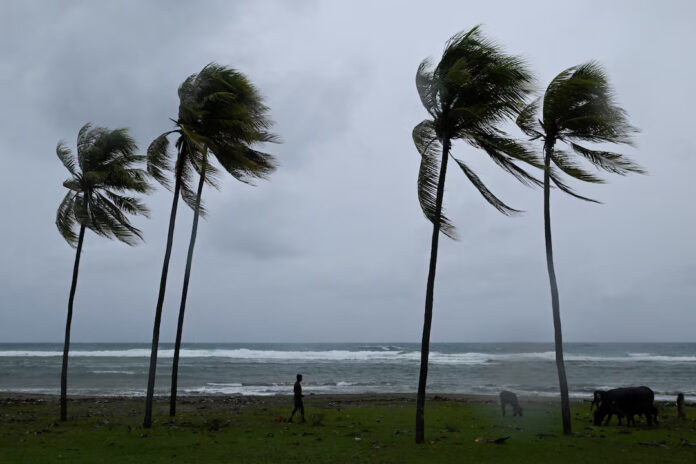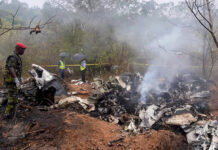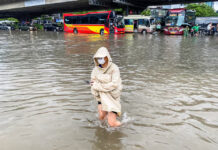
Hurricane Melissa, the strongest storm ever recorded in Jamaica, churned toward Cuba on Tuesday after leaving a trail of destruction across the Caribbean island.
The Category 4 hurricane made landfall near New Hope in southwestern Jamaica with sustained winds of up to 185 mph (295 kph), according to the U.S. National Hurricane Center (NHC), stronger than the minimum threshold for a Category 5 storm.
Jamaica’s Prime Minister Andrew Holness described “widespread devastation,” saying the southwestern parish of St. Elizabeth was left “underwater” and more than 500,000 residents were without electricity.
“The reports that we have had so far include damage to hospitals, significant damage to residential and commercial property, and destruction of road infrastructure,” Holness told CNN.
While no confirmed fatalities were reported, he warned that loss of life was likely given the storm’s severity.
As Melissa drifted northwest, its winds weakened slightly to 145 mph (233 kph) but continued to batter Jamaica’s mountainous interior, triggering landslides and flash floods that cut off several communities.
At least three people were reported dead in storm preparations, and a disaster coordinator suffered a stroke during the hurricane’s onset.
In Cuba, authorities ordered 500,000 people to evacuate low-lying areas as Melissa approached the country’s second-largest city, Santiago de Cuba.
“We should already be feeling its main influence this afternoon and evening,” President Miguel Díaz-Canel said in state newspaper Granma, warning that the cyclone would cause “significant damage.”
Evacuations were also underway in the Bahamas, which lies next in the storm’s projected path.
For Jamaica, Melissa has been dubbed the “storm of the century.” The island, though familiar with hurricanes, had never before taken a direct hit from a Category 4 or 5 system.
Meteorologists at AccuWeather said Melissa ranks among the three most intense hurricanes ever recorded in the Caribbean, alongside Wilma (2005) and Gilbert (1988), the latter being the last major storm to make Jamaican landfall.
“It’s a catastrophic situation,” said Anne-Claire Fontan of the World Meteorological Organization, warning of storm surges up to four meters high.
Residents described terrifying scenes as the hurricane roared across the island. “It’s like a roaring lion. It’s mad, really mad,” said Collin Henry McDonald, a retiree in Portland Cottage.
Local officials said at least 15,000 Jamaicans were in emergency shelters as of late Tuesday, though many had refused to evacuate despite government orders affecting 28,000 people.
Aid agencies warned that food, clean water, and agricultural supplies would be urgently needed, especially in farming regions devastated by flooding.
“People are scared,” said Colin Bogle of Mercy Corps. “There is frustration that Jamaica continues to face the worst consequences of a climate crisis we did not cause.”
Scientists have linked the storm’s rapid intensification to warming ocean temperatures, part of a broader trend of more frequent and powerful tropical cyclones.
Caribbean leaders have renewed calls for climate reparations and debt relief from high-emission nations as they confront the growing toll of climate-related disasters.
As Hurricane Melissa barrels toward Cuba and the Bahamas, forecasters warn that its slow-moving path could worsen the destruction, a grim reminder of the mounting threats posed by a warming planet.
Source: Reuters
Written By Rodney Mbua


















